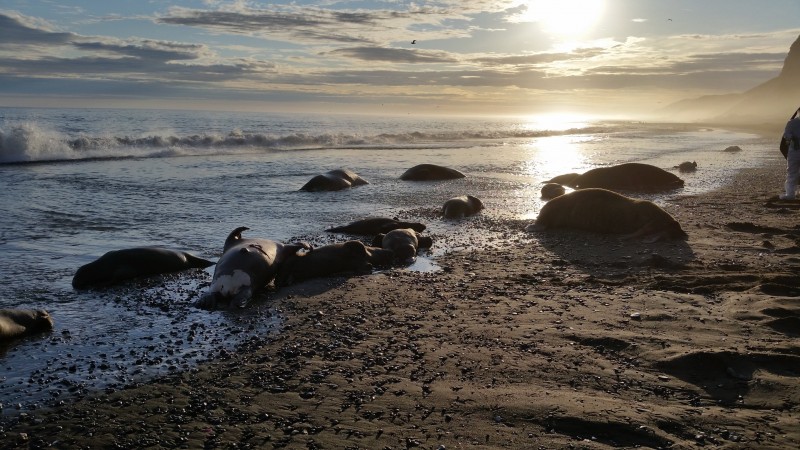Twenty-five walrus carcasses lay on an Alaskan shoreline. Some were calves. And some were missing their tusks.
Why? That’s what federal authorities — including the local U.S. attorney and special agent in charge of Alaska’s U.S. Fish and Wildlife Service office — want to know.
U.S. Attorney Karen Loeffler’s office issued a news release Wednesday detailing how the walruses were found killed near Cape Lisburne, a locale in far northwestern Alaska along the Arctic Ocean, on September 16. Authorities officially opened their investigation two days later.
Killing a Pacific walrus, in itself, is not necessarily illegal in Alaska. They are part of the diets of Alaskan natives who live along the coast, and their tusks, bones and hides are sometimes used as part of their handicrafts. The parts are also used in other ways, such as hides that cover wooden boat frames or tusks reshaped as harpoon points.
Yet mass killings are another thing — especially if the killers try to take the walrus tusks so they can sell them. As with elephants, a walrus tusk contains ivory that is in high demand in some illicit circles. The U.S. Attorney’s Office pointed to the Marine Mammal Protection Act that aims to safeguard species such as the Pacific walrus.
In 2013, for instance, an Alaska man pleaded guilty and got six months in prison violating federal wildlife law for — among other things — his involvement in the sale of migratory birds and his part in purchasing, transporting and selling walrus tusks and other parts for resale.
One trip alone had about 275 pounds of walrus tusks, and the man was actually paid in other tusks that he then resold.
